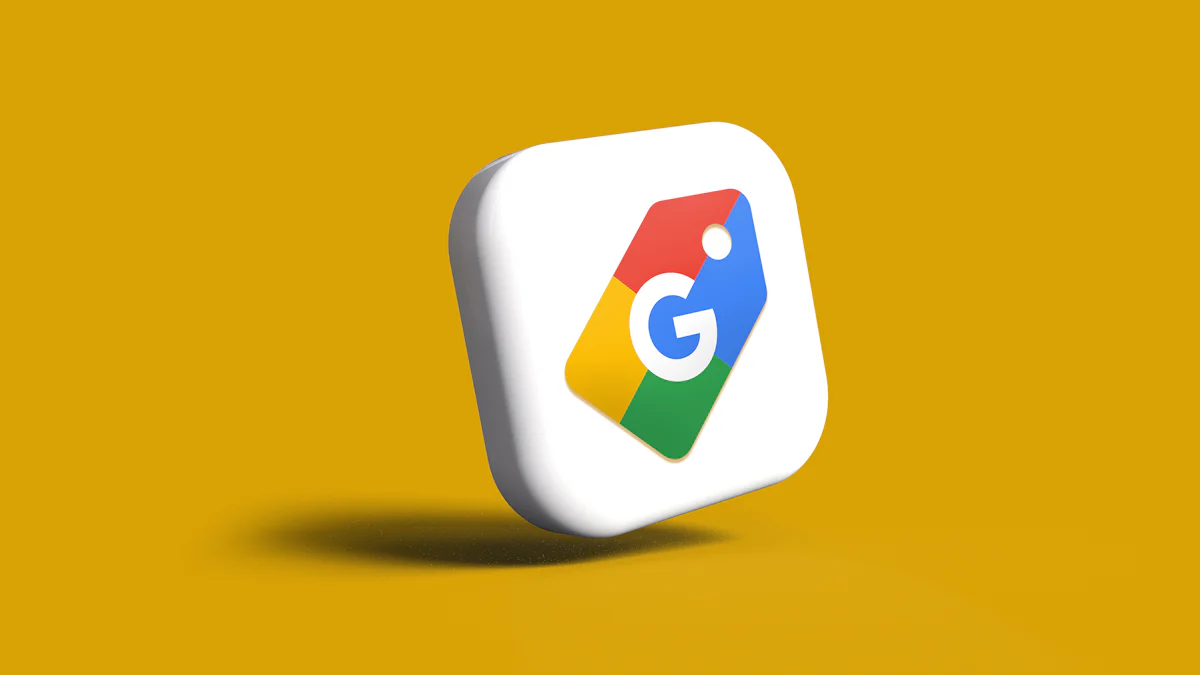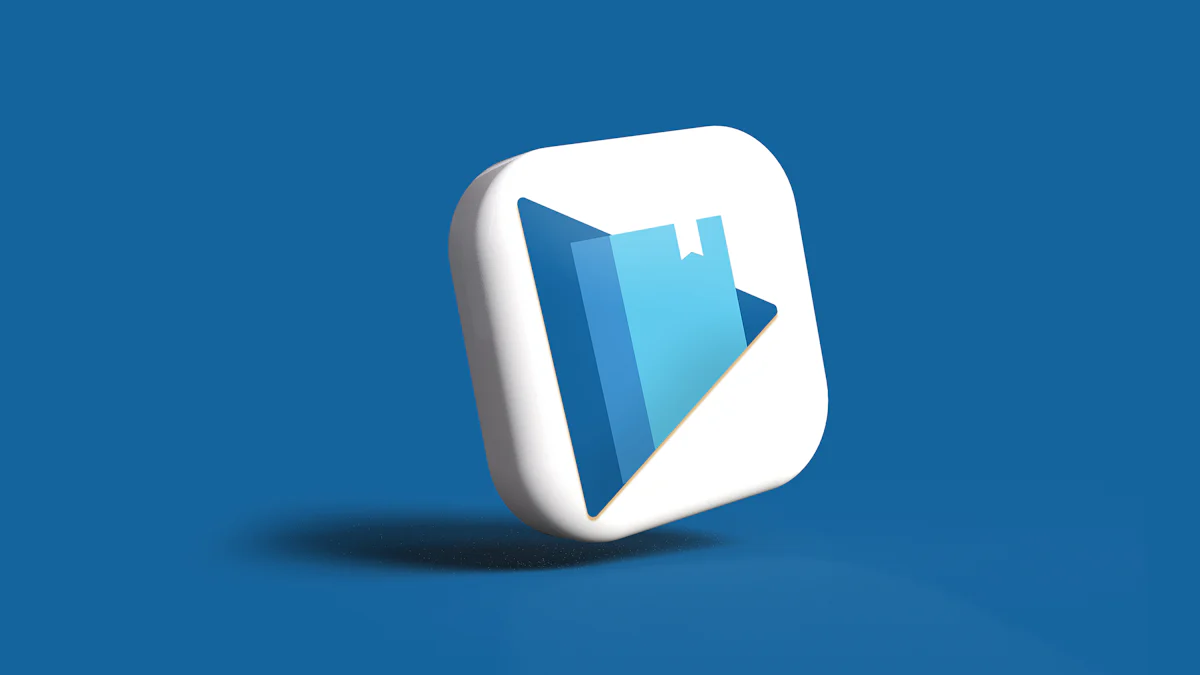2025年に簡単な方法でGoogleスライドにPDFを挿入する方法
Google スライドに PDF を追加すると、プレゼンテーションをより魅力的で有益なものにすることができます。詳細な文書、グラフ、レポートを再作成せずに含めることができます。疑問に思っているなら Google スライドに PDF を挿入する方法、5 つの方法から選択できます。これには、PDF を画像に変換する、Google ドライブ経由でリンクする、ツールを使用して PowerPoint に変換する方法などがあります。PDF のスクリーンショットやサードパーティの埋め込みツールも使用できます。いずれの方法も使いやすさが異なり、PowerPoint への変換が最も簡単で、手動でのコピーが最も時間がかかります。
Google スライドに PDF を挿入する理由は?
豊富なコンテンツでプレゼンテーションを強化
Google スライドのプレゼンテーションに PDF を挿入すると、よりダイナミックで魅力的なプレゼンテーションに変換できます。PDF には、多くの場合、スライドの質を高めるインフォグラフィック、グラフ、詳細なレポートなどの豊富なコンテンツが含まれています。たとえば、インフォグラフィックは複雑なデータを簡略化し、視聴者が理解しやすくします。PDF のアイコンやビジュアルも情報をすばやく伝え、わかりやすくします。
PDF からハイパーリンクやナビゲーション補助を追加すると、プレゼンテーションをインタラクティブにすることができます。これにより、聴衆はその他のリソースを調べたり、特定のトピックを深く掘り下げたりすることができます。PDF に埋め込まれたビデオやオーディオクリップなどのマルチメディア要素を使用すると、スライドをさらに充実させ、より没入感のある体験を作成できます。これらの要素を統合することで、プレゼンテーションを目立たせ、メッセージを効果的に伝えることができます。
重要な文書をシームレスに共有
PDFは、専門職と教育現場の両方で重要な文書を共有するために広く使用されています。PDF を挿入すると、パンフレット、提案書、ピッチデッキなどの資料をスライドに直接含めることができます。これにより、個別のファイルを配布する必要がなくなり、聴衆は 1 か所ですべてに簡単にアクセスできるようになります。
インタラクティブなPDF、小冊子、プレゼンテーションも一般的にこの形式で共有されます。これらの文書をスライドに埋め込むことで、視聴者に包括的な体験を提供できます。このアプローチは、クライアントや学生に必要な情報をすべてすぐに入手できるようにするため、クライアントや学生にプレゼンテーションを行う場合に特に役立ちます。Google スライドを使用して重要なドキュメントをシームレスに共有すると、コミュニケーションが強化され、視聴者の関心を維持できます。
手動コピーを回避して時間を節約
PDF からスライドにコンテンツを手動でコピーすると、時間がかかり、エラーが発生しやすくなります。代わりに、ツールを使用して PDF を Google スライドに直接挿入できます。オンライン変換ツールを使用するとこのプロセスが簡単になり、複雑なインストールなしで PDF コンテンツをプレゼンテーションにすばやく取り込むことができます。PDF を画像に変換する場合でも、Google ドライブ経由でリンクする場合でも、これらの方法を使用すると貴重な時間を節約できます。
手動でのコピーを避けることで、PDF の元の書式も維持されます。これにより、グラフ、表、その他の要素が意図したとおりに表示されます。PDF を効率的に挿入できると、時間を節約できるだけでなく、間違いのリスクも減り、洗練されたプロフェッショナルなプレゼンテーションを作成できます。
Google スライドに PDF を挿入する 5 つの簡単な方法

PDF を画像に変換
PDF ページを画像に変換するためのステップバイステップガイド
PDF を画像に変換することは、そのコンテンツを Google スライドに統合する最も簡単な方法の 1 つです。このプロセスを完了するには、Acrobat や Preview などのツールを使用できます。
- アクロバット: PDF を開き、「エクスポート先」>「画像」を選択し、JPEG や PNG などのお好みの形式を選択します。
- プレビュー (Mac): PDF を右クリックして [プログラムから開く] > [プレビュー] を選択し、[ファイル] > [エクスポート] に移動して JPEG 形式で保存します。
より高度なオプションについては、Cisdem PDF コンバーター OCR の使用を検討してください。このツールは高速処理が可能で、一括変換をサポートし、PDF の元のフォーマットを保持します。OCR 技術を使用してテキストや画像を正確に抽出するので、スキャンした PDF に特に便利です。
Google スライドに画像を挿入する方法
PDF ページを画像に変換したら、Google スライドに簡単に追加できます。プレゼンテーションを開き、[挿入] をクリックして [画像] を選択します。[コンピューターからアップロード] を選択して画像を追加します。スライドのレイアウトに合うように、必要に応じてサイズを変更して配置します。この方法により、PDF コンテンツが洗練されたプロフェッショナルな仕上がりになります。
GoogleスライドにPDFリンクを挿入するにはどうすればよいですか?
Google ドライブに PDF をアップロードする方法
Google スライドで PDF をリンクするには、まず PDF を Google ドライブにアップロードする必要があります。Google ドライブを開き、[新規] をクリックして [ファイルのアップロード] を選択します。使いたい PDF ファイルを選択します。アップロードしたら、ファイルを右クリックして [共有] を選択し、リンクをコピーします。共有設定で、リンクを持つすべてのユーザーがアクセスできることを確認します。
Google スライドで PDF をリンクする手順
- Google スライドのプレゼンテーションを開きます。
- リンクを配置する画像またはテキストボックスを選択します。
- [挿入] > [リンク] をクリックして、コピーしたリンクを貼り付けます。
- 「適用」を押してリンクを確定します。
この方法は、コンテンツを直接埋め込まずに PDF 全体にアクセスしたい場合に最適です。わかりやすく説明的なリンクテキストを使うと、何をクリックしたかがオーディエンスに伝わります。
PDF をパワーポイントに変換
PDFをパワーポイントに変換するツール
PDF を PowerPoint に変換して Google スライドにシームレスに統合するのに役立つツールがいくつかあります。これらには次のものが含まれます。
- PDFの元のフォーマットを維持する無料のオンラインコンバーター。
- スキャンしたPDF用のOCRテクノロジーを備えたツールで、テキストを編集できます。
- 変換したスライド用にカスタマイズ可能なテンプレートを提供するプラットフォーム。
たとえば、ドラッグアンドドロップインターフェイスを使用して PDF をアップロードし、PowerPoint テンプレートを選択し、変換を開始できます。このプロセスにより、PDF のレイアウトを維持しながら高い精度を確保できます。
変換したファイルを Google スライドにインポートする
PDFをPowerPointに変換したら、Googleスライドを開き、[ファイル] > [スライドをインポート] をクリックします。変換した PowerPoint ファイルを選択し、追加したいスライドを選択します。一部のデザインは変換中にずれる場合があるため、必要に応じて書式を調整してください。この方法は、さらにカスタマイズするために編集可能なスライドが必要な場合に適しています。
PDF のスクリーンショットを使用する
PDF のスクリーンショットを撮る方法
PDF のスクリーンショットを撮ると、そのコンテンツを Google スライドにすばやく簡単に追加できます。まず、パソコンで PDF を開きます。デバイスに内蔵されているスクリーンショットツールを使用して、含めたい特定のセクションをキャプチャします。Windows では、を押してください。 ウィンドウズ + シフト + S スニッピングツールを有効にします。Mac ユーザーの場合は、を押してください コマンド + シフト + 4 キャプチャしたいエリアを選択します。後で簡単にアクセスできるように、スクリーンショットをコンピューターに保存します。
PDFに複数のページが含まれている場合は、必要なページまたはセクションごとに別々のスクリーンショットを撮ってください。この方法は、ファイル全体を変換せずにグラフ、画像、またはテキストブロックをキャプチャする場合に適しています。スクリーンショットは元のフォーマットを維持するので、スライドに追加したときもコンテンツがプロ並みに見えます。
Google スライドへのスクリーンショットの挿入
スクリーンショットの準備ができたら、Google スライドのプレゼンテーションを開きます。トップメニューの [挿入] をクリックし、[画像] を選択します。[コンピューターからアップロード] を選択し、スクリーンショットファイルを見つけます。アップロード後、スライドのレイアウトに合うように画像のサイズを変更して配置します。テキストボックスや注釈を追加して、スクリーンショットのコンテキストを提供することもできます。
この方法は、文書全体を含めずに PDF の特定のセクションを追加する場合に最適です。グラフや図のような視覚的な要素を必要とするプレゼンテーションに特に便利です。スクリーンショットを使用すると、追加のツールやソフトウェアを使用しなくても、PDF ファイルを Google スライドにすばやく追加できます。
サードパーティツールを使用して PDF を埋め込む
埋め込みをサポートするツールの概要
サードパーティのツールには、PDF を Google スライドに直接埋め込むための高度なオプションが用意されています。これらのツールはプロセスを簡素化し、カスタマイズ用の追加機能を提供します。一般的なオプションには次のものがあります。
- PDF をスライドに:このアドオンは PDF を Google スライド形式に直接変換し、コンテンツの編集や表示を簡単にします。
- DocHub: DocHub は主に PDF エディターですが、Google ドライブと統合されています。PDF に注釈を付けて Google スライドにシームレスに取り込むことができます。
これらのツールは、視覚的なコンテンツとインタラクティブな要素の両方を必要とするプレゼンテーションに特に役立ちます。PDF を Google スライド形式に効率的に変換できるため、プレゼンテーションを魅力的でプロフェッショナルなものに保つことができます。
PDF を直接埋め込む手順
サードパーティツールを使用して PDF を埋め込むには、次の手順に従います。
- PDF をスライドに変換、DocHub などのツールを選択してください。
- PDF をツールにアップロードします。
- PDF を Google スライド形式に変換するか、必要に応じて注釈を付けます。
- 変換したファイルを Google スライドにインポートします。
この方法は、編集可能なスライドを必要とするプレゼンテーションに適しています。手動で調整する必要がなくなり、時間と労力を節約できます。これらのツールを使用すると、元の書式を維持したまま PDF を Google スライドにすばやく変換できます。
PDF を埋め込むと、ビジュアルコンテンツとインタラクティブな機能を組み合わせてプレゼンテーションの質を高めることができます。ビジネス提案や教育プロジェクトで PDF を Google スライドに追加する必要がある場合でも、信頼できるソリューションはサードパーティ製ツールです。
Google スライドに PDF を挿入する方法の比較
使いやすさ
Google スライドのプレゼンテーションに PDF を追加する方法は、それぞれ利便性のレベルが異なります。迅速でわかりやすい方法をお好みの場合は、PDF を画像に変換するか、スクリーンショットを撮るのが最適です。これらの方法では最小限のツールしか必要とせず、PDF の特定のセクションに集中できます。PDF を Google ドライブにアップロードしてリンクするのも簡単な方法です。これにより、追加のソフトウェアが不要になり、視聴者がファイルにアクセスできるようになります。
上級ユーザー向けに、PDF を PowerPoint に変換すると、編集可能なスライドが提供されます。この方法には少し手間がかかりますが、柔軟にカスタマイズできます。PDF to Slides や DocHub などのサードパーティツールを使用するには、アドオンのインストールやアカウントの作成など、追加の手順が必要になる場合があります。ただし、これらのツールは埋め込みプロセスを簡略化し、スライドを強化するための追加機能を提供します。
フォーマットの保存
プロフェッショナルな外観を維持するには、PDFの元のフォーマットを維持することが重要です。PDF を画像に変換したり、スクリーンショットを撮ったりすることで、チャート、グラフ、その他のデザイン要素の視覚的な整合性が保たれます。これらの方法では、レイアウトを変更せずに PDF の正確な外観をキャプチャできます。
編集可能なコンテンツが必要な場合は、PDF から PowerPoint への変換が適しています。この方法ではほとんどの書式が保持されますが、調整が必要な場合もあります。Google ドライブから PDF をリンクすると、ドキュメント全体が保存され、閲覧者は元の形式でアクセスできるようになります。特に PDF を Google スライド形式に直接変換する場合には、サードパーティ製のツールもフォーマットの維持に優れています。
各方法のベストユースケース
それぞれの方法は、ニーズに応じてさまざまなシナリオに適しています。
- スクリーンショットの使用: 視覚的な整合性を保ちながら PDF の特定の部分をキャプチャする場合に最適です。
- PDF を画像に変換: PDF の複数のページを静止画像として含めるのに最適です。
- PDF からパワーポイントへの変換を使用する: 元々プレゼンテーションだったPDFに適しており、編集可能なスライドが可能です。
- テキストをコピーして貼り付ける: 書式設定が重要ではないテキストが多い PDF の簡単な方法です。
- Google ドライブ OCR を使用する: スキャンした PDF からテキストを抽出し、編集可能なテキストに変換するのに効果的です。
これらのユースケースを理解することで、プレゼンテーションの目標に合った方法を選択できます。PDF を挿入する必要があるのがビジュアルの場合でも編集可能なコンテンツ用であっても、適切な方法を選択することでシームレスなエクスペリエンスが保証されます。
PageOn.ai を使用して PDF ファイルをプレゼンテーションに変換する

PageOn.ai とは何ですか?
PageOn.ai は、PDFをプロフェッショナルなプレゼンテーションに変換するプロセスを簡素化するように設計された高度なAI搭載プラットフォームです。PDF の内容を分析し、文書の本質を捉えたスライドを作成します。このプラットフォームは、フォーマットとデザインを維持したまま、元のファイルの整合性を確保します。さまざまなテンプレートやスタイルをニーズに合わせて選択して、プレゼンテーションをカスタマイズできます。複数の文書を扱うユーザー向けに、PageOn.ai にはバッチ処理が用意されており、複数の PDF を一度に変換できます。この機能は時間を節約し効率を高めるので、専門家にも学生にも理想的です。
PageOn.ai の主な機能
AI 検索と仮想プレゼンテーションの統合
PageOn.ai は AI を使用して PDF を分析し、重要な点を強調したスライドを生成します。この機能により、手動でスライドを作成する必要がなくなり、時間を節約できます。このプラットフォームには仮想プレゼンテーションツールも統合されているため、魅力的でインタラクティブなセッションを提供できます。AI 主導の提案は、プレゼンテーションが聴衆の共感を呼ぶようにコンテンツを絞り込むのに役立ちます。
データ分析とレポート生成
PageOn.ai を使用すると、複雑なデータを視覚的に魅力的なスライドに変換できます。このプラットフォームはさまざまなファイル形式をサポートしているため、さまざまな種類の文書に対応できます。高度な編集ツールにより、チャート、グラフ、表を調整して、データが明確に表示されるようにすることができます。この機能は、ビジネスレポートや学術的なプレゼンテーションに特に役立ちます。
カスタムビジュアルのための AI 画像生成
PageOn.ai は、クリエイティブなビジョンに合った高品質の画像を生成することで、スライドの視覚的な魅力を高めます。プレゼンテーションのトーンに合わせて、さまざまなスタイルやテーマを試してみることができます。この機能により、ビジュアルを手動で検索したり作成したりする必要がなくなるため、創造性が高まり、時間を節約できます。AI が生成する画像により、スライドが洗練されたプロ並みの仕上がりになります。
PageOn.ai の使用に関するステップバイステップガイド
ステップ 1: PageOn.ai ウェブサイトにアクセスする
まず、PageOn.ai ホームページに移動します。「開始」ボタンをクリックしてプロセスを開始します。
ステップ 2: トピックを入力して参照ファイルをアップロードする
変換したいPDFをアップロードします。その他の参照ファイルがある場合は、それらを含めて AI のコンテキストを詳しく説明してください。
ステップ 3: AI が生成したアウトラインを確認してテンプレートを選択する
PageOn.ai は PDF を分析し、プレゼンテーションのアウトラインを作成します。アウトラインを確認して、自分のスタイルに合ったテンプレートを選択してください。プラットフォームにはさまざまなオプションが用意されているので、ニーズに合ったものを見つけることができます。
ステップ 4: AI で生成されたプレゼンテーションをカスタマイズする
好みに合わせてスライドを調整してください。色、フォント、画像を変更して、ブランドやオーディエンスに合わせることができます。直感的なインターフェイスにより、初心者でも簡単にカスタマイズできます。
ステップ 5: プレゼンテーションを保存またはダウンロードする
スライドに満足したら、プレゼンテーションを保存またはダウンロードします。会議、授業、イベントにすぐに使用できます。
これらの手順に従うことで、PDFを数分でプロフェッショナルなプレゼンテーションに変換できます。PageOn.ai はプロセスを合理化し、メッセージを効果的に伝えることに集中できるようにします。
PDF インテグレーションに PageOn.ai が推奨される理由
PageOn.ai は、その革新的な機能とユーザーフレンドリーなデザインにより、PDF をプレゼンテーションに統合するための最高の選択肢として際立っています。従来のツールとは異なり、人工知能を使ってPDFを分析し、内容を効果的に表現するスライドを生成します。この AI 主導のアプローチにより、文書からプレゼンテーションへのシームレスな移行が保証されます。もう何時間もかけて手動でファイルを変換したりフォーマットしたりする必要はありません。その代わり、面倒な作業はプラットフォームが行い、時間と労力を節約できます。
PageOn.ai の直感的なインターフェースにより、あらゆるスキルレベルのユーザーがアクセスできます。1 分以内に新しいプロジェクトを開始できます。レイアウトはわかりやすく、ツールにはわかりやすいラベルが付いているので、混乱することなくプラットフォームを操作できます。初心者でも経験豊富なプレゼンターでも、このプロセスはスムーズでストレスフリーです。このシンプルさにより、技術的なハードルに悩まされることなく、プレゼンテーションの改善に集中できます。
PageOn.ai の最も強力な機能の 1 つは、バッチ処理機能です。このツールを使用すると、複数の PDF ファイルを同時に変換できます。研究や編集作業などで大量の文書を扱う場合、この機能を使用すると生産性が大幅に向上します。複数のファイルを一度に処理できるため、品質を損なうことなく、厳しい納期にも対応できます。
PageOn.ai は、PDF の元のフォーマットを維持する点でも優れています。チャート、グラフ、その他の視覚要素はそのまま残り、プレゼンテーションがプロフェッショナルに見えるようになります。このプラットフォームでは、スタイルやブランドに合わせてスライドをカスタマイズすることもできます。色、フォント、レイアウトを簡単に調整でき、ビジョンに合った洗練された最終製品を作成できます。
高度な AI 技術と実用的な機能を組み合わせることで、PageOn.ai は PDF 統合のための包括的なソリューションを提供します。プロセスを簡素化し、高品質な結果を維持し、貴重な時間を節約します。ビジネス提案、学術報告書、クリエイティブなプロジェクトのいずれを準備する場合でも、このツールはプレゼンテーションを目立たせます。
Google スライドに PDF を挿入する際の留意事項
フォーマットの問題
Google スライドに PDF を挿入する場合、書式設定が難しい場合があります。PDF には、表、グラフ、画像などの複雑なレイアウトが含まれていることがよくあります。これらの要素は必ずしもスライドに完全に反映されるとは限りません。例えば、PDF を PowerPoint に変換すると、テキストや画像の配置が少し変わることがあります。同様に、PDF のスクリーンショットや画像は、サイズを変更しすぎると鮮明さが失われる可能性があります。
このような問題を回避するには、PDF コンテンツを追加した後で必ずスライドをプレビューしてください。要素の位置がずれていないか、画像がぼやけていないか確認してください。問題が見つかった場合は、レイアウトを調整するか、フォーマットをより適切に維持できるツールを使用してください。例えば、PDF to Slides のようなサードパーティ製のツールは、PDF の元の構造を維持するように設計されています。書式設定に注意することで、プレゼンテーションがプロフェッショナルで洗練されたものになります。
ファイルサイズと互換性
ファイルサイズも考慮すべき重要な要素です。高解像度の画像やマルチメディア要素を含む PDF は、プレゼンテーションのサイズを大幅に拡大する可能性があります。ファイルが大きいと、Google スライドの速度が遅くなったり、他のユーザーとの共有が難しくなることがあります。Google ドライブ経由で PDF をリンクする場合は、読み込みが速くなるようにファイルが最適化されていることを確認してください。
ファイルサイズを管理するには、スライドに追加する前に PDF を圧縮します。多くのオンラインツールでは、品質を損なうことなく PDF のサイズを小さくできます。さらに、使用している PDF と使用している方法との互換性を確認してください。古い PDF 形式の中には、特定のツールや変換方法ではうまく動作しないものがあります。プレゼンテーションがスムーズに動作することを確認するために、必ず別のデバイスでプレゼンテーションをテストしてください。
ニーズに合った適切な方法の選択
PDF を挿入する最適な方法の選択は、特定の要件によって異なります。PDF の特定の部分だけが必要な場合は、スクリーンショットを撮るか、ページを画像に変換するのが最も効率的な方法かもしれません。これらの方法を使うと、不要なコンテンツを含めずに重要なセクションに集中できます。また、ビジュアルに大きく依存するプレゼンテーションにも適しています。
インタラクティブな要素やマルチメディア要素を必要とするプレゼンテーションの場合は、Googleドライブを介してPDFをリンクする方が適しています。この方法では、クリック可能なリンクや埋め込み動画など、PDF 本来の機能が維持されます。一方、フォーマットを完全に制御したい場合は、PDF からコンテンツを手動でコピーして貼り付けるのが理想的です。この方法では、長い文書では時間がかかりますが、各スライドを自分のスタイルに合わせてカスタマイズできます。
それぞれの方法の長所と限界を理解することで、目標に合った方法を選択できます。スピード、カスタマイズ、インタラクティビティのどれを優先するにしても、適切なアプローチをとることで、メッセージが効果的に伝わります。
これで、Google スライドに PDF を挿入する 5 つの効果的な方法がわかりました。これには、PDF ページの画像への変換、Google ドライブ経由の PDF のリンク、編集用の PowerPoint ファイルへの変換などが含まれます。テキストを直接コピーして貼り付けたり、OCR ツールを使用してスキャンした PDF から編集可能なコンテンツを抽出したりすることもできます。それぞれの方法には独自の利点があるため、プレゼンテーションの目的に合った方法を選択してください。例えば、PDF を画像に変換することはビジュアルの保存に適していますが、Google ドライブ経由でリンクさせるのはインタラクティブな要素に最適です。
シームレスで効率的なソリューションが必要な場合は、PageOn.ai を試してみてください。このAI搭載ツールは、PDFを数分でプロフェッショナルなプレゼンテーションに変換できるため、プロセスを簡素化します。時間を節約し、フォーマットを維持でき、スタイルに合わせたカスタマイズオプションも用意されています。PageOn.ai を使用すれば、技術的な課題を気にすることなく、インパクトのあるプレゼンテーションの提供に集中できます。